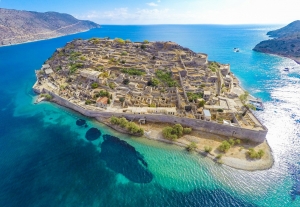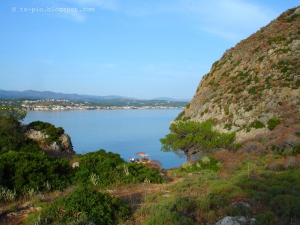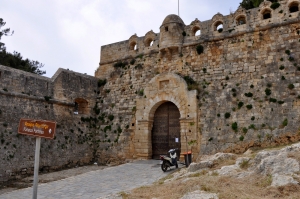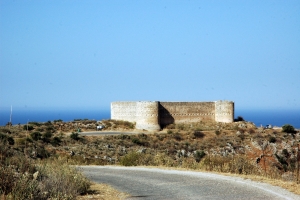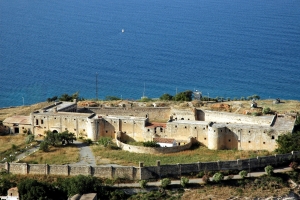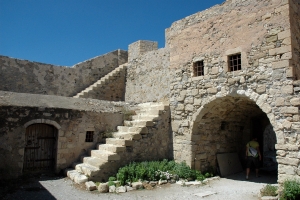Spinalonga is a small island located at the entrance of Elounda lagoon and north of the Gulf of Mirabello. It has an area of 85 acres and its maximum height is 53 meters. The history of the island still inspires awe. It has been a Venetian fortress, a castle colony, a rebel refuge, a place of exile for lepers, a communication link with Cairo during the Second World War.
The island of Agioi Theodoroi or Thodorou and located just opposite of the beach of Platanias in Chania, just half a mile northern. The history of the island and its ecological importance in preserving the protected species of the Cretan wild goat, make this small dot on the map very important.
Fortezza fort dominates the hill Palekastro beside the old town of Rethymnon and is one of the biggest fortresses of the Venetian Era. It has been built on the site of the citadel of ancient Rithimna and the Temple of Artemis Rokkea. The grand pentagonal fort was built in the 1573 and has perimeter 1300m long.
The imposing medieval fortress of Koules still stands at the beginning of the western breakwater of the modern port of Heraklion. Its real name is Rocca al Mare, named so by its Venetian founders. Koules, or the Great Koules like it is called, was not the sole ruler of the port.
Souda is the name of the small island that stands like a guard in the entrance of the gulf of Souda., a natural harbor protected by the high mountains the east of Chania, on the northeast side of the port of Chania.
The fort of Koules is located in Paleokastro area, 12km east of Chania, near the village of Kalami and close to the ruins of ancient Aptera. The fort was built by the Turks after the Cretan Revolution of 1866, in the framework of a program to control Crete from a network of towers.
The fort of Intzedin is the only fort on Crete built by the Turks, located on the hill Kalami, 15km east of Chania and has a panoramic view to Souda Gulf. The fortress of Intzedin was built in 1872 by Reouf Pasha, on the same location where in 1646 the first Turks built a tower, chasing away the Venetians. It was the main defense construction of the port and was named "Intzedin" to honor the first born son of the Sultan Abdul Aziz Intzedin.
The fort Kales was built by the Venetians in the 13th century AD, to protect the town of Ierapetra from its enemies. In 1508 it was destroyed by an earthquake and the Turkish raids. The damage was not repaired, perhaps because it was very serious and there was no funding.











